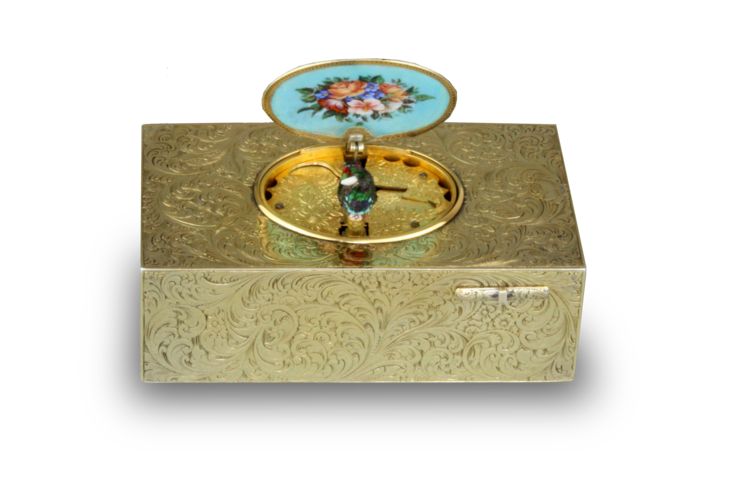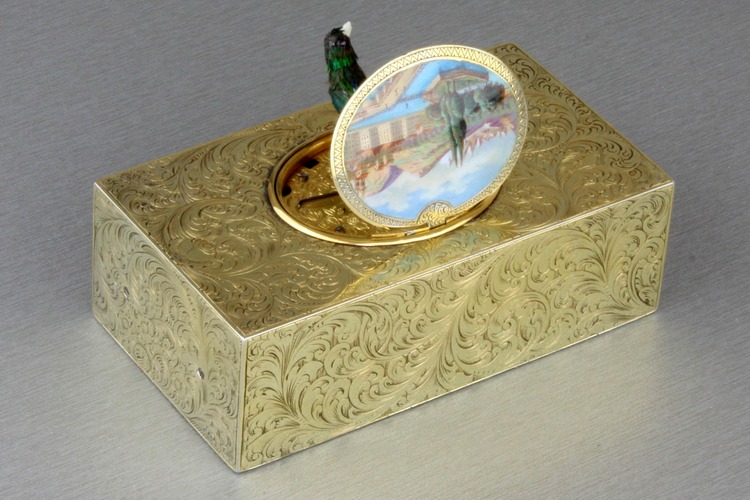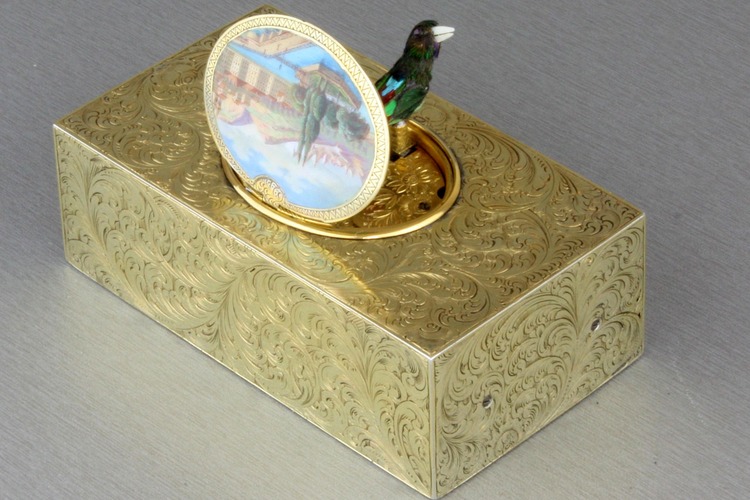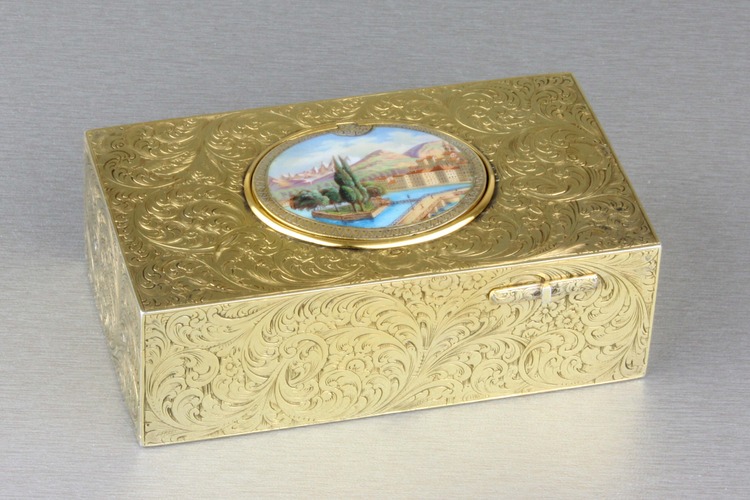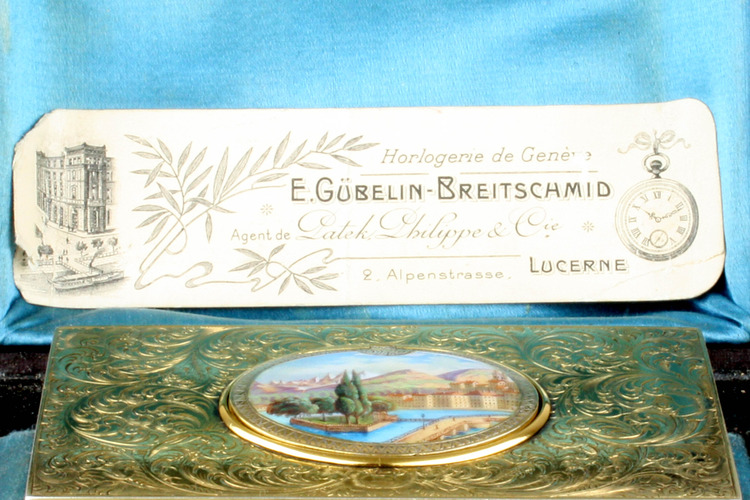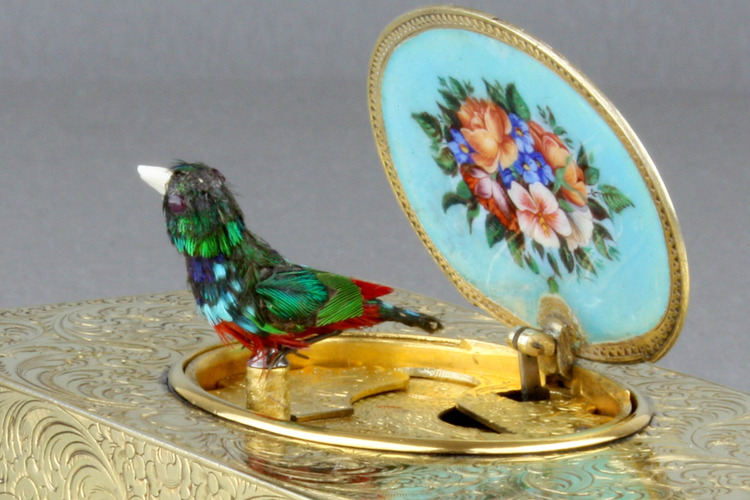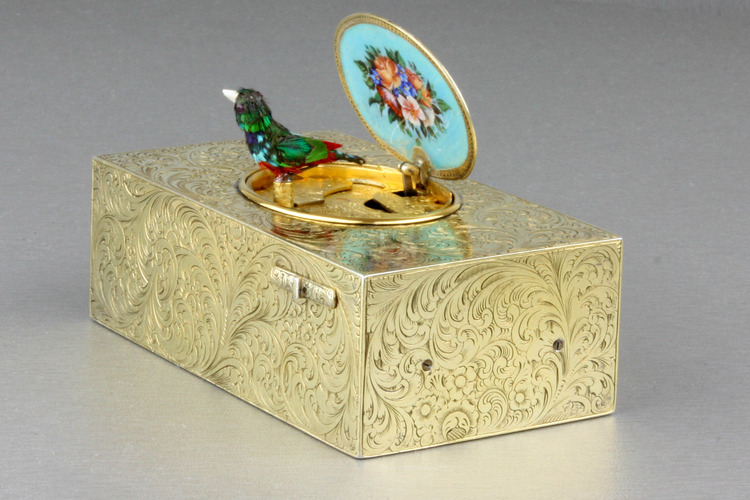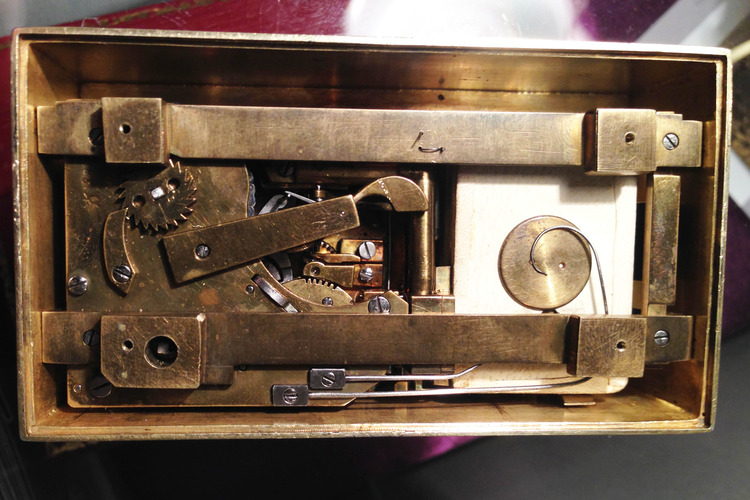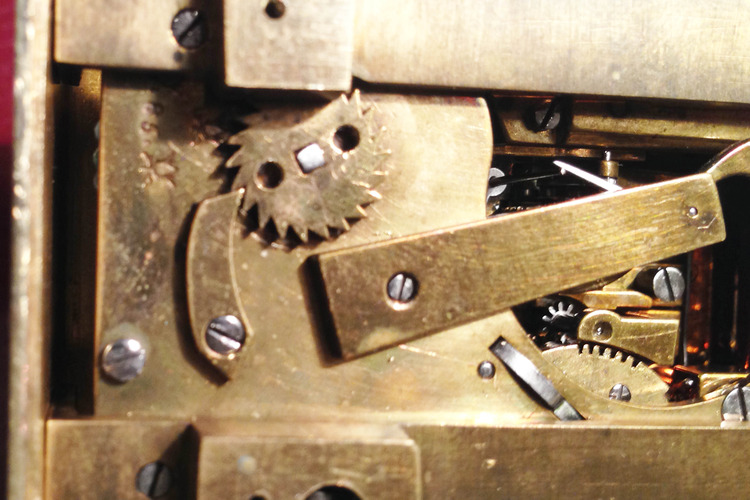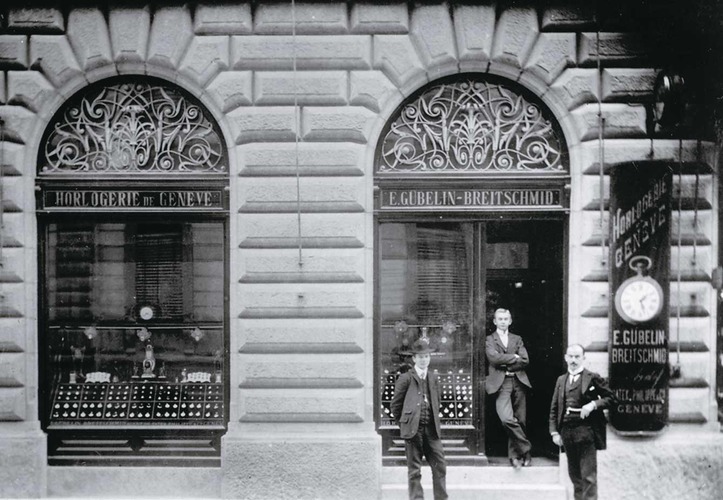An early and sublime antique silver-gilt and pictorial enamel singing bird box, by Rochat,
Swiss
circa 1825
Fusee movement
Serial number 85
Retailed by E. Gubelin Breitschmid of Lucerne,
To Geneva and beyond...
When wound and finely engraved start/stop button slid to the right, the enamelled bird lid opens as the bird suddenly yet majestically appears, turning head, flapping both wings, bobbing tailfeather and turning whole body from side to side whilst opening and closing beak, perfectly synchronised to the sequentially phased birdsong in 1-2-3-4 sequence from cam-stack.
Stamped with the Rochat triple tulips on baseplate, next to serial 85.
The bird with stunning geometrically layered feathered plumage in blood red, lime green, splashes of turquoise, with the head mostly finished with bright green and soft brown iridescence, rising up through the solid bird-form centrum gilt grille, inscribed and pierced to the finest detail with extremely good attention to feathers and wings, surrounded by floral heads and leaves before demi Lune pierces.
Bird lid interior with painted enamel study of roses and lilies amongst their leaves, on pastel turquoise ground, framed by petit saw-tooth tooled edge, the bird lid top with a superb example of the much sought-after finely painted enamel study of the Island on Lake Geneva with the town seen behind, with the pentagonal island with maturing canopied trees, angled bridge with gaslight standards and figures walking across, shore side buildings with the cathedral behind and sweeping into the distance, the giant mountains with numerous snow-capped peaks pointing towards the Cumulonimbus clouds, eclipsed by scroll chased demi Lune lip, edged by double saw-tooth frieze and plain highly polished border.
In the extraordinary silver-gilt tooled and chased case. The top, front, back and both sides with a continuous and highly complex medley of intertwining swags, stylised leaves and scrolls, executed to a breath-taking level of quality and sharpness seen only on Rochat boxes. The tooling of mesmerising technique to reveal full three-dimensional and shadow shading for the flowing swags, all framed with very refined polished edge lines to straight corners, underside with plain polished plate, with a warm hue colour that time has exerted upon it.
With a key and within a period retailer tooled black leather travelling case, with light blue silk lined interior, accompanied by the E. Gubelin Breitschmid card strip bearing Lucerne address.
size - 3.5/8in. wide, 2in. deep, 1.3/8in. high - (9.2 x 5 x 3.5cm)
Point of Interest -
The retailer E. Gubelin Breitschmid is still trading today, now under just the 'Gubelin' name, they are very well known for there quality jewellery, however in the late 19th century they were very well known as a quality retailer and an agent for Patek Philipe. The address shown on the label inside the fitted case tells us this box was retailed by the firm sometime between 1887 and 1899
The Rochat singing bird sequence of 1-2-3-4 may not be the longest song phase, but it is one of the cleverest. The first phase played is a naturalistic melody akin to wild birdsong as we know it. The second is a slightly more complex version of the same notation, whilst the complexity becomes ever consuming until at the fourth phase, the notes played are very quick, using most of the full potential of the whistle pitch settings.
The case is a real thrill. The scene, set of course at the famous island at Geneva, shows it as it was around the time this singing bird box was made - 1825. The William Tell steamboat, taken out of service in 1827 is not seen as usual upon the water here, making the study quite a rarity, given the other details such as figures walking, the mountains in the background included and the building features has been taken to such a fine level.
All set off by tooling to the Rochat standard. Just like the gold boxes, the detail here is in the same league - museum quality. Even with the assistance of a loupe, the detail travels on beyond what the eye is casually able to define.
A most sublime singing bird box of the highest order, made by the genius Swiss craftsman Rochat.


